MORE OF MY FAVORITE TH . . . GRAPE VARIETIES
/3 Comments/in Pests/by Lee ReichThe Birds and the B . . . Vespids
Hot and dry. What great summer weather it’s been here for grapes. Most years around this date, I’d go out every morning and pick bunches for fresh eating, continuing to do so for weeks to come.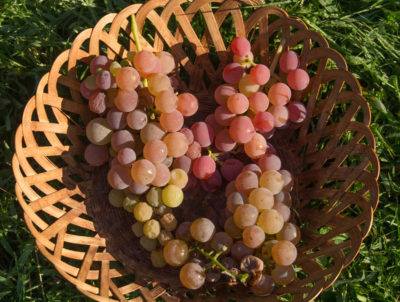
Alas, where there are grapes, you’ll find the birds and the be. . . vespids (the family of wasps and hornets, not bees). No raccoons or foxes, here on my grapes, at least. Here you’ll also find paper bags stapled around about a hundred bunches.
The bags are meant to protect the enclosed bunches from birds and insects. This year was a first: Thirsty birds pecked holes in the bags through which they could reach, then peck at the grapes hanging within. By my estimate, about three-quarters of the bagged bunches suffered damage or were finished off in toto.
In addition to the damage inflicted by the birds, the resulting holey bags provide easy entrance to wasps and hornets, who further tear up the bag and finish off the fruit repast started by birds.
THESE ARE A FEW OF MY FAVORITE TH . . . VARIETIES
/7 Comments/in Vegetables/by Lee ReichNot a Research Station, but I do Test
It seems that every couple of years or so, some kind gardener offers me seeds, plants, or just a recommendation for the best-tasting, earliest ripening, or longest keeping tomato. I’m appreciative, but these days usually refuse the offer or ignore the recommendation.
True, In addition to providing a year ’round supply of fruits and vegetables, my farmden provides a testing ground for innovative techniques in growing fruits and vegetables, and provides a site for workshops and training. All this would surely include trying out new kinds and varieties of fruits and vegetables.
But I want to avoid having my plantings become like those described by Charles Dudley Warner in his 1887 classic My Summer in the Garden: “I have seen gardens which were all experiment, given over to every new thing, and which produced little or nothing to the owners, except the pleasure of expectation.”
Still, I have studied plants and soils in both academic settings and in my own “back forty” (actually, my own back 2 and 3/4). I’m in New York’s Hudson Valley, Hardiness Zone 5, more specifically the Wallkill River Valley. This low spot is notable for good soil and bad air. The soil is fertile, perfectly drained, and pretty much free of any rocks or stones. But cold, damp air, being heavier than warm air, pours down hillsides into this valley. It suits disease-causing fungi and bacteria of plants just fine.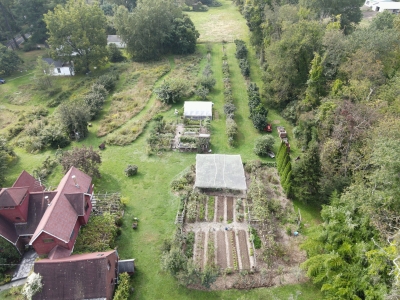
The above paragraph is a preamble to my offering a few recommendations on species and varieties worth growing in similar settings, but also, in many cases, where conditions don’t match those here on the farmden. I’ve also gardened in the Upper Midwest and in the South, and I think these recommendations would be well received over a large swath of our country. Some may be worth a spin in your own “back forty.”
GOURMET COMPOST FOR ALL
/12 Comments/in Soil/by Lee ReichYour Pet Needs:
As the bumper sticker on my truck reads, “COMPOST HAPPENS.” Even so, problems sometimes arise along the way.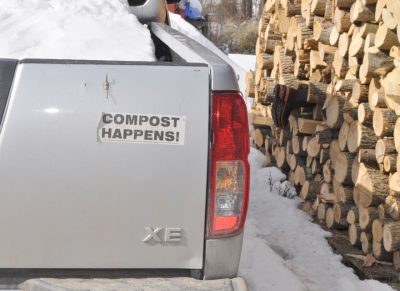
Is your main complaint that your compost “happens,” but too slowly. I like to picture my compost pile as a pet, except this pet is made up of many different kinds of macro- and microorganisms, and the population changes over time. Like other pets, my compost pet and your compost pet need food, air, and water.
Compost piles work quickest when their two most important foodstuffs — nitrogen and carbon — are in balance. (All this, by the way, also applies to us humans; our nitrogen comes mostly from proteins, and our carbon comes mostly from carbohydrates.) Old, usually brown and dry plant materials, such as autumn leaves, straw, hay, and sawdust, are the carbon-rich foods for a compost pile. 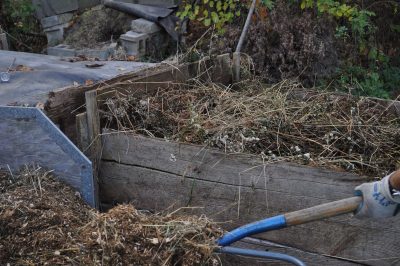 The older the plant material, the richer it is in carbon. Nitrogen-rich materials include young, green plant parts, such as tomato stalks, vegetable waste from the kitchen, and grass clippings, as well as manures.
The older the plant material, the richer it is in carbon. Nitrogen-rich materials include young, green plant parts, such as tomato stalks, vegetable waste from the kitchen, and grass clippings, as well as manures.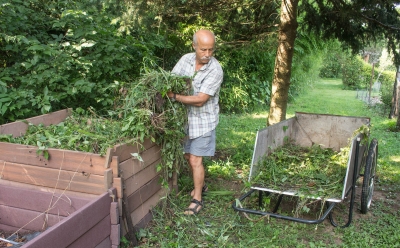
Nitrogen fertilizers are concentrated sources of nitrogen. They commonly are the active ingredients of commercially available compost “activators.” “Activator” has a nice ring to it, but it is overpriced, unnecessary, candy for any compost. Sometimes they also contain microorganisms, also unnecessary.

